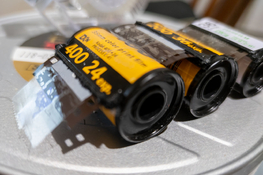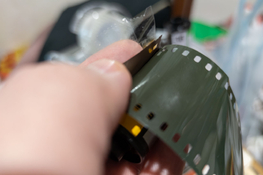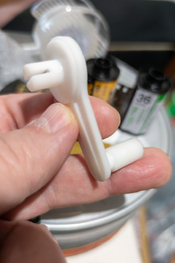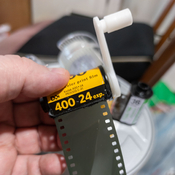cannotShootStraight
Member
Hello everyone,
I wasn't aware until recently that 35mm film is also sold in large rolls with several 100ft.
It is a pretty interesting idea to buy such large rolls and then respool them onto 35mm canisters.
I took a look at several YouTube videos where this process is explained but I am left with some questions.
First of all, what bothers me a little bit is that the beginning and the end of each roll is wasted because this part is exposed to light, at least with the respooling machines I've seen.
Is there a way to at least not waste the end of the roll? Which machine is the best for this job?
Second, I am not sure what the better option for canisters is.
Either the reusable, generic black ones or previously used canisters where the new film is attached to the ending that still sticks out of the can?
I've heard the generic black ones aren't totally light safe? On the other hand, I don't have any empty film canisters because the lab throws them away and I only get the developed film.
Third, how do I get the correct DX codes on the can? Unfortunately, my Nikon F75 only reads ISO from the DX code of the can and I can't set it myself.
Fourth, what happens if I have spooled to little film on the can and I have less than 36 frames?
Does my Nikon F75 recognize this? Will it rip the film apart? Do I have to encode this as DX code as well?
Do you guys have experience with respooling from 100ft rolls? Would you say the process is worth the money you saved?
I will probably go easy for my first bulk roll and purchase something like Fomapan 400.
I wasn't aware until recently that 35mm film is also sold in large rolls with several 100ft.
It is a pretty interesting idea to buy such large rolls and then respool them onto 35mm canisters.
I took a look at several YouTube videos where this process is explained but I am left with some questions.
First of all, what bothers me a little bit is that the beginning and the end of each roll is wasted because this part is exposed to light, at least with the respooling machines I've seen.
Is there a way to at least not waste the end of the roll? Which machine is the best for this job?
Second, I am not sure what the better option for canisters is.
Either the reusable, generic black ones or previously used canisters where the new film is attached to the ending that still sticks out of the can?
I've heard the generic black ones aren't totally light safe? On the other hand, I don't have any empty film canisters because the lab throws them away and I only get the developed film.
Third, how do I get the correct DX codes on the can? Unfortunately, my Nikon F75 only reads ISO from the DX code of the can and I can't set it myself.
Fourth, what happens if I have spooled to little film on the can and I have less than 36 frames?
Does my Nikon F75 recognize this? Will it rip the film apart? Do I have to encode this as DX code as well?
Do you guys have experience with respooling from 100ft rolls? Would you say the process is worth the money you saved?
I will probably go easy for my first bulk roll and purchase something like Fomapan 400.










